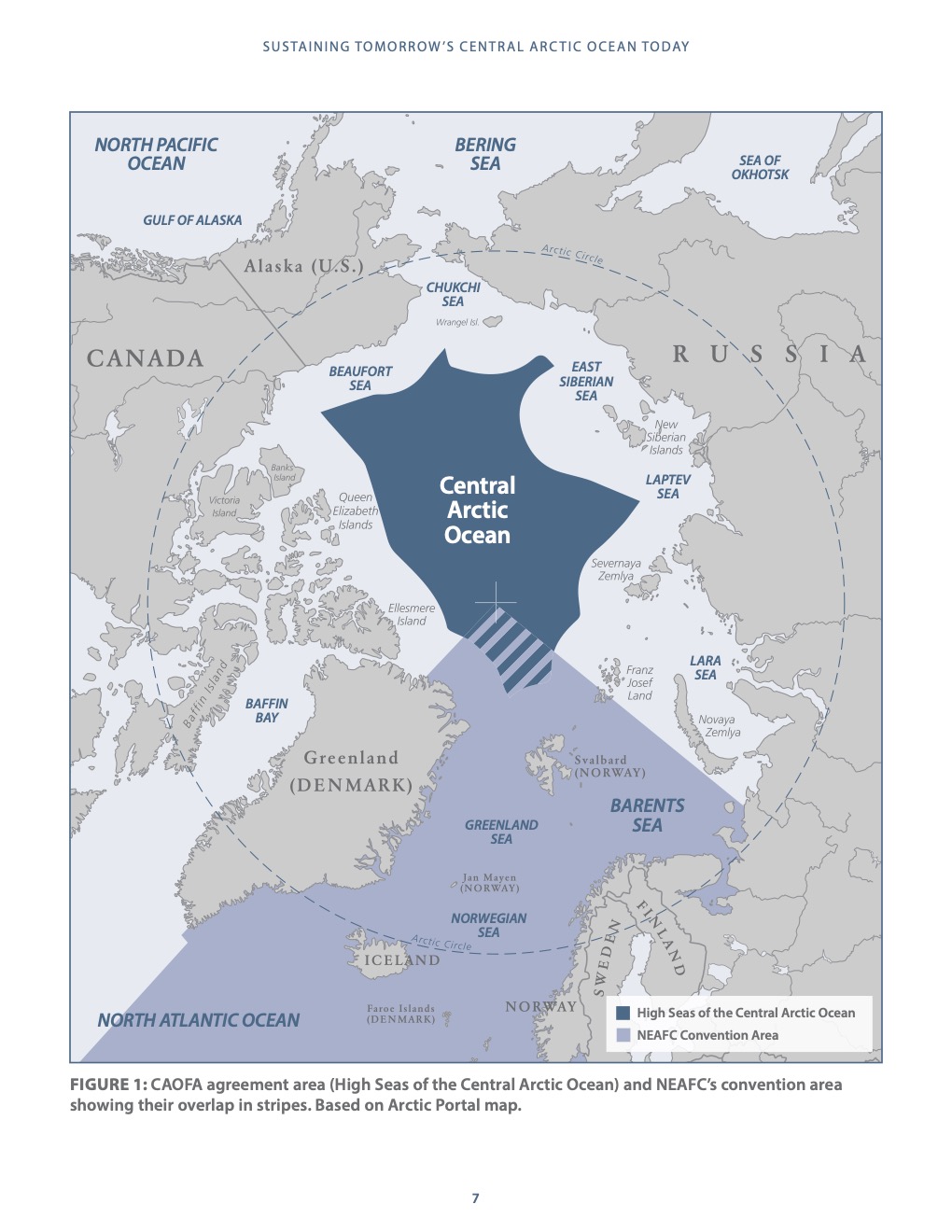© iStock / mikeuk
Governance of the Central Arctic Ocean
A large portion of the Central Arctic Ocean (CAO) lies outside the jurisdiction of any single country. This is part of the High Seas, or Areas Beyond National Jurisdiction (ABNJ), where no one government has control.
What is the Central Arctic Ocean?

© WWF
As Arctic sea ice melts, the CAO is opening to potential fishing, shipping, and even seabed mining—but it lacks coordinated governance.
A fragmented system
The CAO is currently governed by a mix of international sectoral bodies:
- The International Maritime Organization (IMO) regulates shipping.
- The International Seabed Authority (ISA) manages international seabed minerals.
- The Central Arctic Ocean Fisheries Agreement (CAOFA) temporarily bans commercial fishing. It aims to protect the ecosystem by applying precautionary conservation and management measures before any fishing begins.
- These institutions operate separately, and there is no unified system to manage cumulative impacts or protect biodiversity.
© US Geological Survey / Flickr
A new opportunity: The High Seas Treaty
In 2023, the UN adopted the High Seas Treaty to improve the conservation of marine biodiversity in areas like the high seas CAO.
Once ratified, it will:
- Enable the creation of marine protected areas
- Require environmental impact assessments for new activities
- Support scientific cooperation and benefit sharing
It has the potential to bring coherence and conservation to the CAO for the first time.
© WWF Global Arctic Programme
WWF's actions
WWF is already working to prepare for treaty implementation by:
1. Identifying marine areas to protect and conserve
WWF is using ArcNet to identify ecological important areas in the Central Arctic Ocean and to promote a governance approach that considers entire ecosystems and coordinates across different sectors. This includes consultation with:
- Indigenous Peoples
- Scientists
- Governments and decision-makers
2. Advocating early action
WWF engages with existing bodies, like the IMO, to push for interim protections that can later be synthesized when the treaty has entered into force.
The window to protect the Central Arctic Ocean is narrow. Action now can prevent environmental damage later.